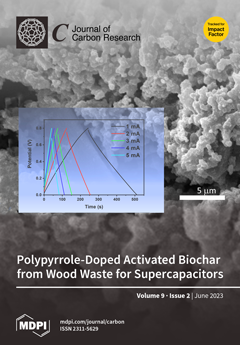Activated carbon (AC) is widely utilized in water treatment, gas adsorption, and purification as well as the protection of environment due to the characteristics of prominent catalytic and adsorbent effect. The heating performances are therefore of significant importance for the further applications. The main objective of this study was therefore to detail the heating performance of activated carbon in microwave field, and the factors affecting the heating performance were also explored. In this study, the heating performance of AC as affected by microwave power (400, 450, 500, 550, and 600 W), feeding load (5, 10, 15, 20, and 25 g), and reactor volume (50, 100, 150, 200, and 250 mL) were detailed and reported. The results showed that when the microwave powers were 400, 450, 500, 550, and 600 W, the temperatures of AC increased to the desired value (about 200 °C) within 90, 85, 70, 60, and 35 s with average heating rates of 2.0, 2.2, 2.8, 3.0, and 5.9 °C/s, respectively. When the feeding loads were 5, 10, 15, 20, and 25 g, the temperatures of AC increased to desired temperature within 40, 70, 60, 50, and 50 s with average heating rates of 4.2, 2.8, 3.1, 3.50, and 3.55 °C/s, respectively. When the reactor volumes were 50, 100, 150, 200, and 250 mL, the temperatures of AC increased to the desired temperature within 25, 60, 70, 70, and 160 s with average heating rates of 7.6, 3.3, 2.8, 2.6, and 1.2 °C/s, respectively. In general, the faster heating rate of activated carbon was achieved at higher microwave power, more feeding load, and smaller reactor volume. Fitting formulae were given to predict the transient temperatures of AC in the microwave field, and the relative errors were in the ranges of −15.4~12.4%, −15.4~13.5% and −18.7~12.4% at different microwave powers, feeding loads, and reactor volumes, respectively.
Full article





